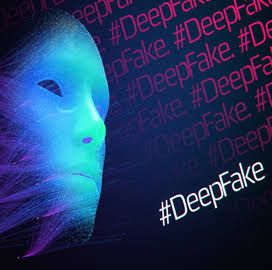Deepfake attacks can be avoided with cybersecurity practices, awareness, and proactive measures.
What are deepfakes?
Deepfakes are artificial media created with artificial intelligence (AI) techniques, specifically deep learning algorithms. The term “deepfake” is derived from the words “deep learning” and “fake.” These technologies employ neural networks to manipulate or generate realistic-looking content, which frequently involves the replacement of one person’s face or voice with that of another.
Read also: Ex-Amazon cybersecurity Engineer in $9 million crypto fraud
Deepfakes that are commonly used
The following are the most common types of deep fakes:
Face Swapping: Using pre-existing images or videos, deep learning algorithms identify and learn a person’s facial features. They then superimpose these features on another person’s face in a different video. As a result, the target person appears to be saying or doing things they never did in a realistic-looking video.
Voice Cloning: By using a dataset of a person’s speech, an AI model can be trained to replicate that person’s voice. Then, using this cloned voice, audio content can be produced that appears to be spoken by the subject—even if the subject has never said those exact words.
Text-to-Speech (TTS) Synthesis: Advanced text-to-speech technology can convert written text into spoken words with remarkably human-like intonation and expression. This can be used to generate fake audio recordings.
Image and Video Synthesis: Generative models, such as Generative Adversarial Networks (GANs), can generate entirely new images or videos that look convincingly real. This technology is not limited to faces and can extend to various visual content.
Recent high-profile deep fake attacks
Cryptocurrency Fraud:
In 2020, fraudsters used a deepfake voice clone to imitate the voice of a Dubai-based bank director to dupe a Hong Kong bank manager into transferring $35 million into their accounts. The deepfake voice was so convincing that the bank manager “recognised it” over the phone, demonstrating the ability of deepfakes to circumvent traditional authentication methods.
CEO Impersonation:
In 2019, a deepfake video of the CEO of a German energy company was used to blackmail executives into transferring $243,000. The deepfake was created with AI software and showed the CEO giving instructions to transfer money to a fraudulent account.
Holographic Deepfakes:
In 2022, Patrick Hillmann, chief communications officer at Binance, the world’s largest crypto exchange, claimed that scammers created a deepfake of him to trick contacts into taking meetings. Hillmann claimed that the fake was created by a “sophisticated hacking team” using video footage of interviews and TV appearances.
Cybercrime Typology in Nigeria: A Sign of Industrialisation Part 1
Strategies to help minimize the risk of falling victim to deep fake attacks
Here are some strategies to help minimize the risk of falling victim to deep fake attacks:
Be Skeptical of Unsolicited Content:
Exercise caution when receiving unsolicited content, especially from unknown or unexpected sources. Verify the identity of the sender before interacting with the content.
Verify Identities:
Confirm the identity of individuals through multiple channels before engaging in sensitive conversations or transactions. This can include video calls, voice calls, or other trusted methods.
Educate Yourself About Deepfakes:
Stay informed about deepfake technology and its potential risks. Understanding how deepfakes work can help you recognise red flags and be more cautious in online interactions.
Use Secure Communication Channels:
When communicating sensitive information, use secure and encrypted channels. Avoid discussing sensitive matters on platforms vulnerable to hacking or manipulation.
Implement Two-Factor Authentication (2FA):
Enable 2FA on your accounts to add an extra layer of security. Even if your password is compromised, 2FA helps protect your accounts from unauthorised access.
Regularly Update Software and Apps:
Keep your operating system, antivirus software, and applications up to date. Regular updates often include security patches that can help protect your devices from vulnerabilities.
Be Cautious with Clicking on Links:
Avoid clicking on links in emails, messages, or social media from unknown sources. These may lead to phishing sites or malicious content that can compromise security.
Use Strong, Unique Passwords:
Create strong, unique passwords for your online accounts. Consider using a password manager to generate and store complex passwords securely.
Monitor Your Financial Accounts:
Regularly review your bank and financial statements for any unauthorised or suspicious transactions. Report any discrepancies to your financial institution immediately.
Secure Your Social Media Accounts:
Set strong privacy settings on social media accounts to control who can see your information and posts. Be cautious about accepting friend requests from unknown individuals.
Verify Emails and Requests:
Verify the authenticity of emails or requests for sensitive information, especially those claiming to be from financial institutions or government agencies. Contact the organisation directly using trusted contact information to confirm.
Implement Email Security Measures:
Use email security features, such as email authentication protocols (SPF, DKIM, DMARC), to reduce the risk of email spoofing and phishing attacks.
Report Suspicious Activity:
If you encounter suspicious accounts, messages, or requests, report them to the relevant platform or authorities. Reporting can help prevent further malicious activities.
Stay Informed and Update Skills:
Keep abreast of cybersecurity trends and best practices. Regularly update your knowledge and skills to adapt to new threats and security measures.
Remember that the cybersecurity landscape is dynamic, and staying vigilant is crucial. Combining awareness with proactive security measures will improve protection against deepfake attacks and other cyber threats.
















